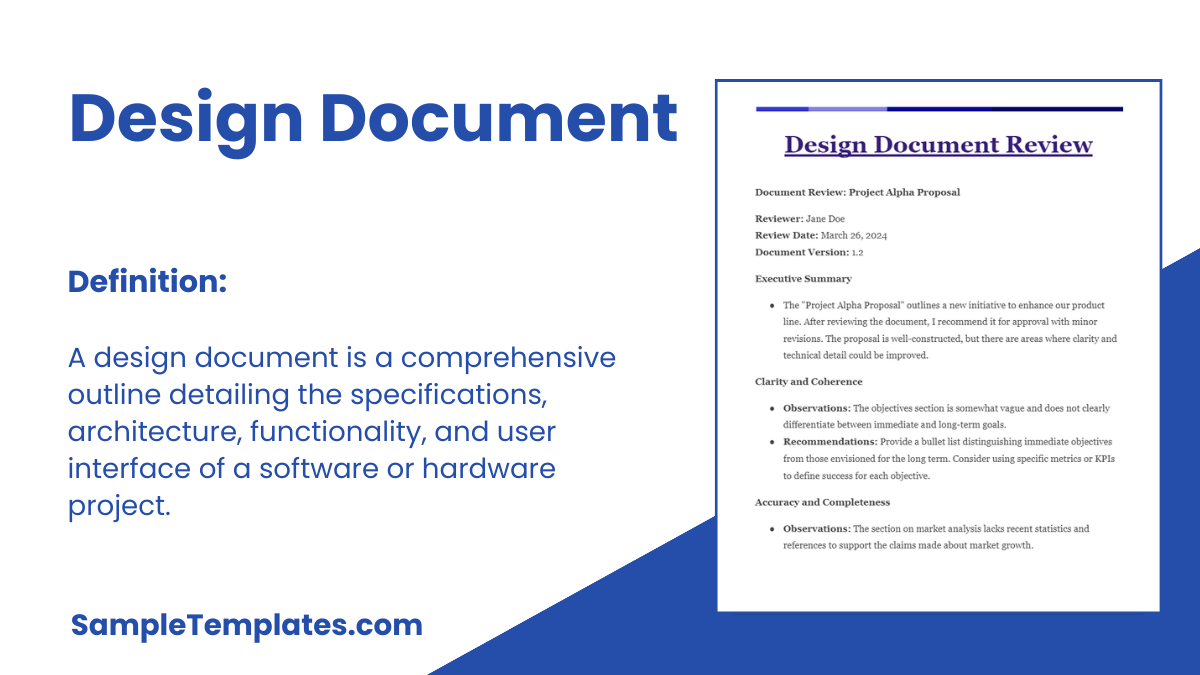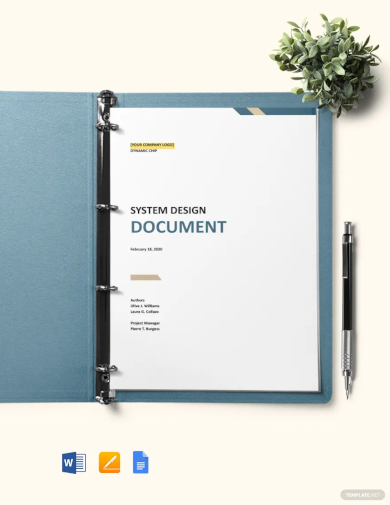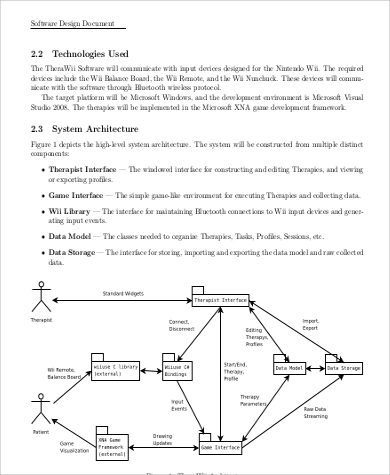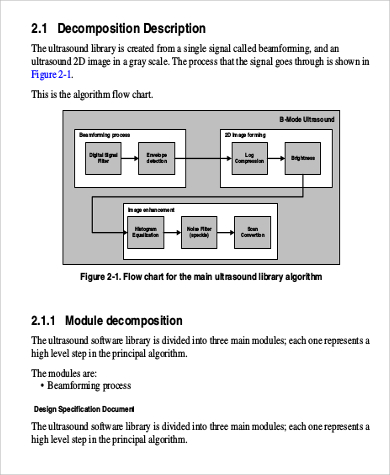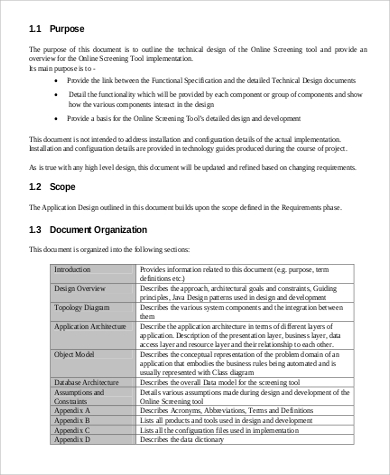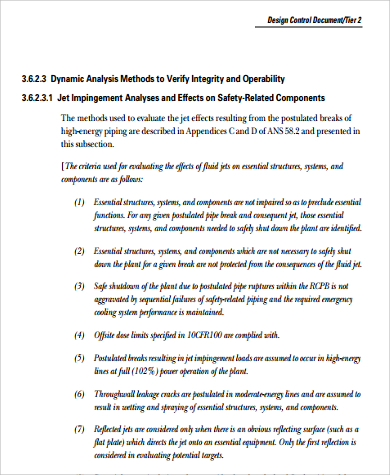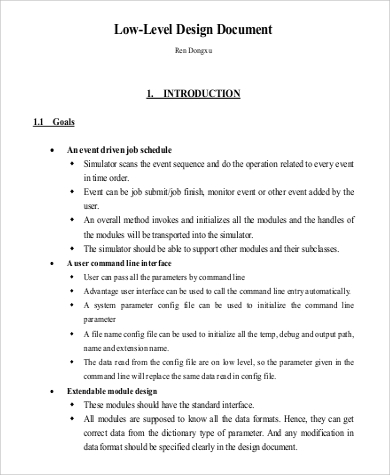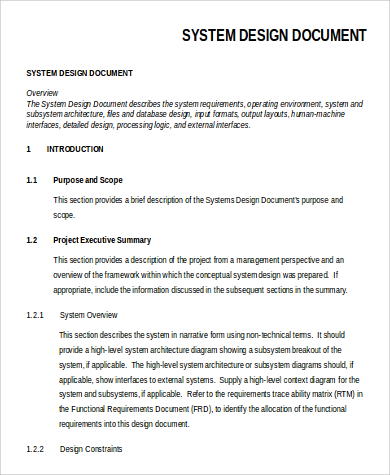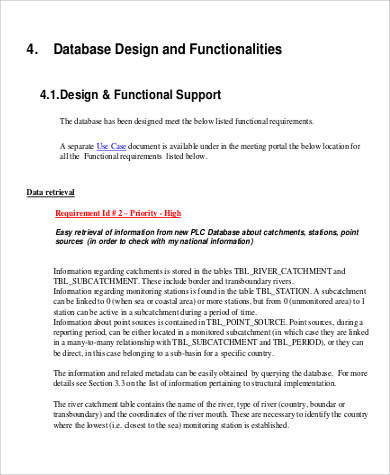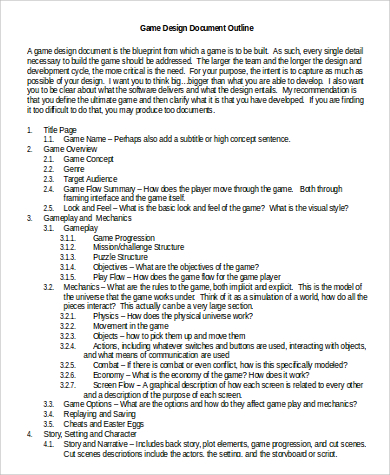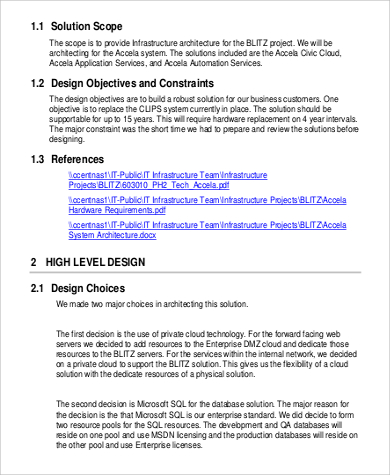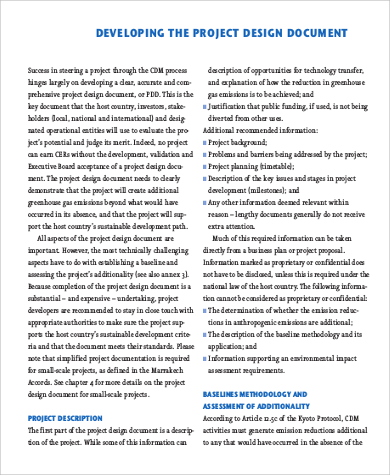Design document, as how Wikipedia would define it as, is a written text or an illustration that would go together with a computer software quote. Either way, it should be able to explain how to use the said computer software as well as how to operate it. This could also mean different things to most people having different roles.
As documentation plays an important role in software engineering, design documents would have a variety and a wide array of types of design document as well as explanations on why each of them is important, also defining how type of design document would precisely fit your computer software. Perhaps checking out these Business Document Samples would be useful.
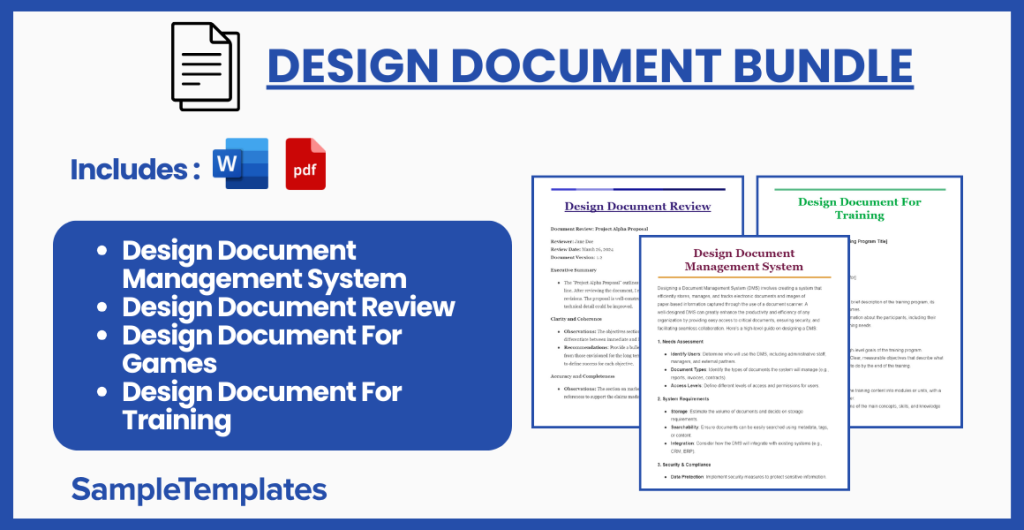
Download Design Document Bundle
Design Document Management System
Designing a Document Management System (DMS) involves creating a system that efficiently stores, manages, and tracks electronic documents and images of paper-based information captured through the use of a document scanner. A well-designed DMS can greatly enhance the productivity and efficiency of any organization by providing easy access to critical documents, ensuring security, and facilitating seamless collaboration. Here’s a high-level guide on designing a DMS:
1. Needs Assessment
- Identify Users: Determine who will use the DMS, including administrative staff, managers, and external partners.
- Document Types: Identify the types of documents the system will manage (e.g., reports, invoices, contracts).
- Access Levels: Define different levels of access and permissions for users.
2. System Requirements
- Storage: Estimate the volume of documents and decide on storage requirements.
- Searchability: Ensure documents can be easily searched using metadata, tags, or content.
- Integration: Consider how the DMS will integrate with existing systems (e.g., CRM, ERP).
3. Security & Compliance
- Data Protection: Implement security measures to protect sensitive information.
- Compliance: Ensure the DMS complies with relevant regulations and standards.
4. Features & Functionality
- Uploading & Scanning: Enable document uploading and scanning directly into the system.
- Version Control: Allow for the tracking of document versions and history.
- Collaboration Tools: Include features for document sharing, commenting, and simultaneous editing.
- Backup & Recovery: Implement reliable backup and disaster recovery solutions.
5. User Interface Design
- Ease of Use: Design an intuitive and user-friendly interface.
- Customization: Allow users to customize views, dashboards, and workflows.
6. Implementation Plan
- Phased Rollout: Consider a phased approach to implementation to address any issues gradually.
- Training: Develop a comprehensive training program for users.
- Feedback Mechanism: Implement a system for collecting user feedback for continuous improvement.
7. Testing & Quality Assurance
- Functional Testing: Ensure all features work as intended.
- Performance Testing: Test the system’s performance, especially under heavy loads.
- Security Testing: Conduct thorough security testing to identify vulnerabilities.
8. Maintenance & Support
- Regular Updates: Plan for regular updates to the software for enhancements and security patches.
- User Support: Provide ongoing support for users through help desks or support teams.
9. Evaluation & Iteration
- Metrics & Reporting: Use metrics and reports to evaluate the system’s performance and user satisfaction.
- Continuous Improvement: Continuously assess and improve the DMS based on user feedback and technological advancements.
Designing a Document Management System is a complex process that requires careful planning and attention to detail. By focusing on the needs of the users and the specific requirements of the organization, you can create a DMS that enhances productivity, ensures security, and facilitates collaboration.
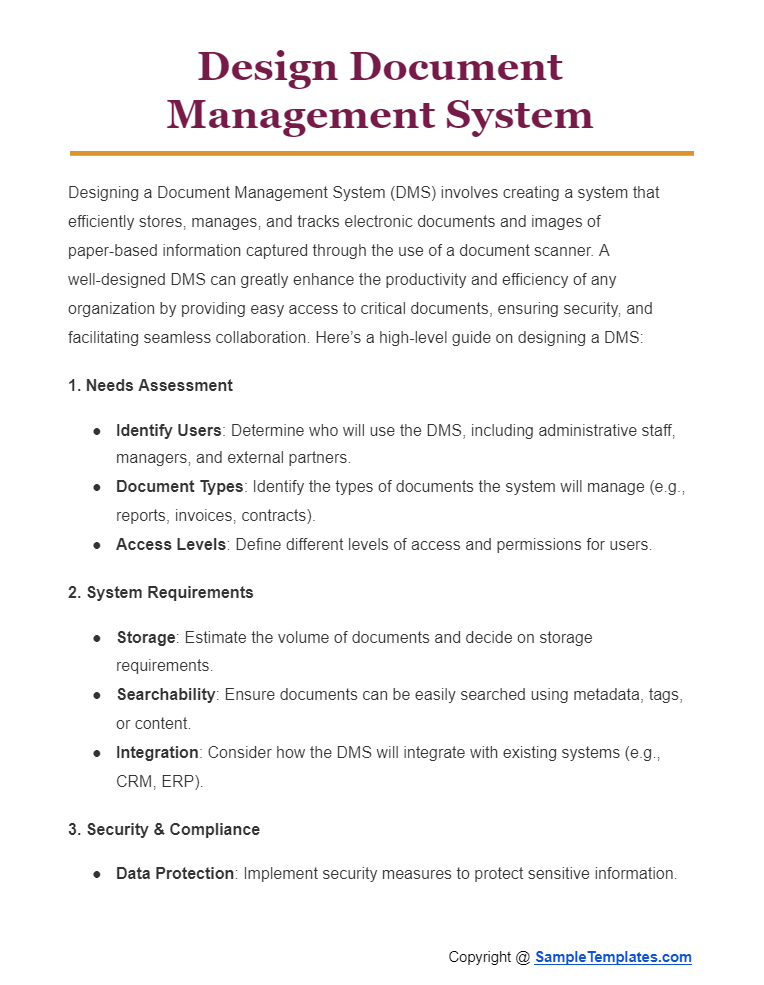
Design Document Review
Document Review: Project Alpha Proposal
Reviewer: Jane Doe
Review Date: March 26, 2024
Document Version: 1.2
Executive Summary
- The “Project Alpha Proposal” outlines a new initiative to enhance our product line. After reviewing the document, I recommend it for approval with minor revisions. The proposal is well-constructed, but there are areas where clarity and technical detail could be improved.
Clarity and Coherence
- Observations: The objectives section is somewhat vague and does not clearly differentiate between immediate and long-term goals.
- Recommendations: Provide a bullet list distinguishing immediate objectives from those envisioned for the long term. Consider using specific metrics or KPIs to define success for each objective.
Accuracy and Completeness
- Observations: The section on market analysis lacks recent statistics and references to support the claims made about market growth.
- Recommendations: Update the market analysis section with the latest industry data from credible sources. Include citations to strengthen the document’s credibility.
Consistency and Standards Compliance
- Observations: There are inconsistencies in terminology, particularly with the use of “customer” and “client.”
- Recommendations: Choose either “customer” or “client” and stick with it throughout the document. Ensure consistency in formatting, especially in headers and bullet lists.
Relevance and Usefulness
- Observations: The proposal includes a detailed technical specification that may not be relevant to all stakeholders.
- Recommendations: Move the detailed technical specification to an appendix and summarize the key points in the main body of the document to keep it relevant for a broader audience.
Technical Accuracy
- Observations: The proposal underestimates the technical challenges associated with integrating the new platform with existing legacy systems.
- Recommendations: Consult with the technical team to provide a more realistic assessment of the integration challenges. Include a revised section on potential risks and mitigation strategies.
Grammar and Style
- Observations: Minor grammatical errors are present, and some sections use a more casual tone than is typical for this type of document.
- Recommendations: Proofread the document to correct grammatical errors. Adjust the tone to be more formal and in line with organizational standards for proposal documents.
Overall Assessment
- The “Project Alpha Proposal” is a strong document with a clear vision for enhancing our product line. With minor revisions for clarity, accuracy, and consistency, it will be ready for approval. The proposal’s strengths include a compelling vision and a realistic budget projection.
Additional Comments
- Consider adding a timeline with milestones to visually represent the project phases. This could enhance understanding and buy-in from all stakeholders.
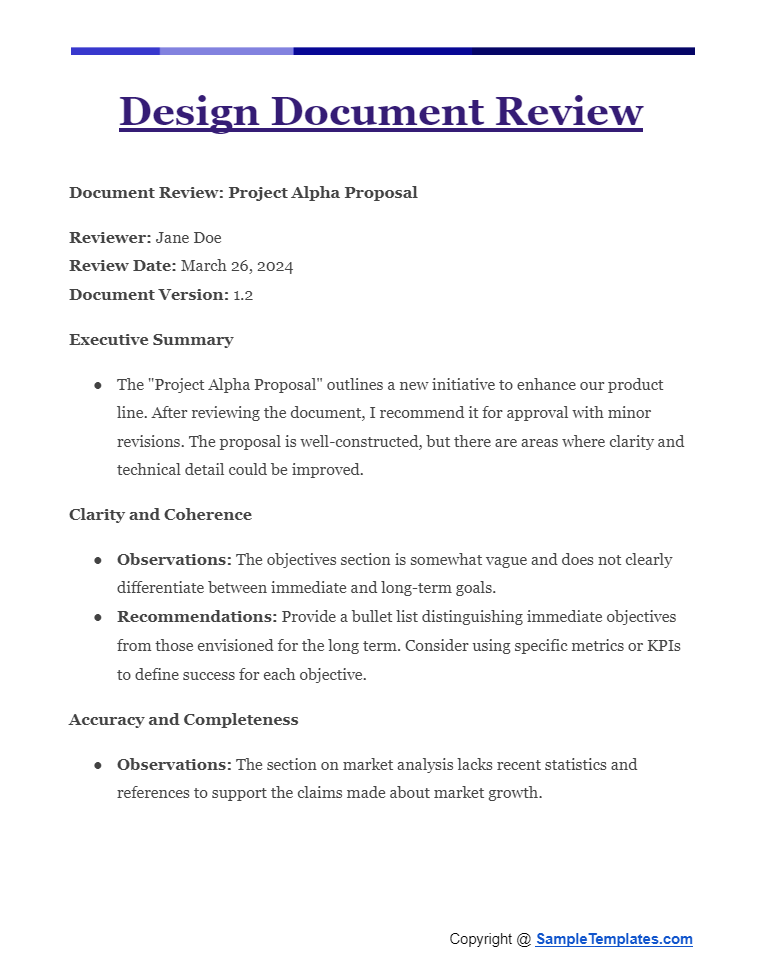
Design Document For Games
Game Design Document for [Game Title]
Document Version: 1.0
Date: [Date]
Author(s): [Author Name(s)]
1. Introduction
- Game Concept: A brief overview of the game idea, genre, target audience, and unique selling points.
- Purpose: The goal of this document and an outline of its contents.
2. Game Overview
- Story and Setting: A summary of the game’s narrative, world setting, and tone.
- Gameplay Mechanics: Detailed description of the game’s rules, player abilities, game progression, and controls.
- Level/Environment Design: Overview of the game’s environments, levels, and major landmarks.
- Art and Sound: The visual style, art direction, character designs, and music/sound effects philosophy.
3. Characters
- Main Characters: Descriptions of the protagonist(s) and key characters, including backstories, abilities, and roles in the game.
- NPCs (Non-Playable Characters): Information on important NPCs and their interactions with the player.
4. Storyline and Quests
- Narrative Structure: The main narrative arc, plot points, and story progression.
- Quests and Missions: A breakdown of the game’s quests, including objectives, rewards, and how they fit into the overall story.
5. User Interface and User Experience (UI/UX)
- Menus and Screens: Design of the main menu, pause menu, inventory system, and other UI elements.
- Accessibility Features: Considerations for making the game accessible to a wide range of players.
6. Technical Specifications
- Platform(s): The game’s target platform(s) (PC, consoles, mobile).
- Engine and Tools: The game engine and key development tools being used.
- Performance Targets: Desired frame rates, resolution, and platform-specific requirements.
7. Art and Sound Design
- Visual Style: Detailed explanation of the visual style, including color schemes, themes, and reference images.
- Character and Environment Art: Concept art and descriptions for characters and game environments.
- Sound and Music: Themes for the soundtrack, sound effects strategies, and voice-over plans.
8. Marketing and Monetization
- Marketing Strategy: Overview of how the game will be promoted to reach its target audience.
- Monetization Model: The game’s revenue model (e.g., premium, freemium, subscription-based).
9. Development Schedule
- Milestones: Key development milestones and their estimated completion dates.
- Budget Overview: An outline of the budget, including development costs, marketing, and post-launch support.
10. Risk Analysis
- Potential Risks: Identification of risks that could impact the game’s development or success.
- Mitigation Strategies: Plans for addressing each identified risk.
11. Appendices
- Glossary: Definitions of key terms used in the document.
- References: Any external references or inspirations for the game.
12. Revision History
- Document Updates: A log of changes made to the document, including version numbers, dates, and a brief description of the revisions.
Creating a detailed Game Design Document is crucial for ensuring that everyone involved in the game’s development is aligned with the vision and objectives. It also serves as a living document that can evolve with the game’s development, providing a reference that ensures consistency and guides decision-making throughout the project.
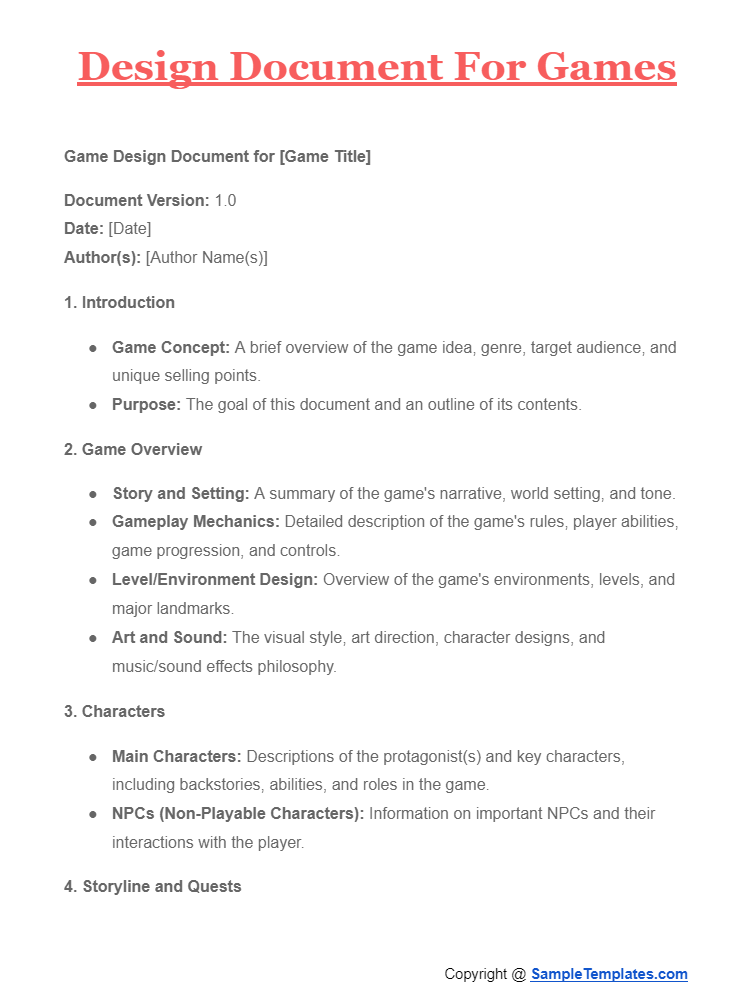
Design Document For Training
Training Design Document for [Training Program Title]
Document Version: 1.0
Date: [Date]
Author(s): [Author Name(s)]
Target Audience: [Who the training is for]
1. Introduction
- Training Program Overview: A brief description of the training program, its purpose, and the expected outcomes.
- Target Audience: Detailed information about the participants, including their roles, experience level, and learning needs.
2. Training Goals and Objectives
- Overall Training Goals: The high-level goals of the training program.
- Specific Learning Objectives: Clear, measurable objectives that describe what participants will know or be able to do by the end of the training.
3. Training Content
- Modules/Units: Breakdown of the training content into modules or units, with a description of what each will cover.
- Key Concepts and Skills: Outline of the main concepts, skills, and knowledge areas that will be addressed.
- Materials and Resources: List of materials, resources, and tools needed for the training, including textbooks, software, and equipment.
4. Instructional Methods and Delivery
- Instructional Methods: Description of the instructional methods to be used (e.g., lectures, interactive sessions, hands-on activities).
- Delivery Mode: How the training will be delivered (in-person, online, hybrid) and any platforms or technologies used.
- Schedule: Proposed schedule for the training, including the duration of each session and breaks.
5. Assessment and Evaluation
- Assessment Methods: Methods for assessing learners’ knowledge and skills during and after the training (quizzes, projects, simulations).
- Evaluation Criteria: Criteria for evaluating the success of the training program, including participant satisfaction, knowledge gains, and application of skills in the workplace.
6. Facilitator Information
- Facilitator(s): Information about the trainers or facilitators, including their qualifications and experience.
- Roles and Responsibilities: Description of the facilitators’ roles and responsibilities during the training.
7. Logistics and Administration
- Venue and Equipment: Details about the training venue, necessary equipment, and setup requirements.
- Participant Registration: Process for registering participants, including any prerequisites.
- Support Services: Information on available support services, such as technical support for online training.
8. Post-Training Support and Follow-up
- Support Resources: Resources available to participants after the training, such as mentoring, online forums, or additional materials.
- Follow-up Activities: Scheduled follow-up sessions, surveys, or evaluations to measure long-term impact and reinforce learning.
9. Budget
- Estimated Costs: Detailed budget for the training program, including facilitator fees, materials, venue, and technology costs.
- Funding Sources: Information on how the training will be funded.
10. Appendices
- Glossary: Definitions of key terms used in the document.
- References: Any references or sources used in developing the training content.
11. Revision History
- Document Updates: Log of changes made to the document, including version numbers, dates, and descriptions of the revisions.
This Training Design Document template ensures that all aspects of the training program are thoroughly planned and documented, from the learning objectives and content to the logistical details. It provides a solid foundation for developing and delivering an effective training program that meets the needs of both the organization and its participants.
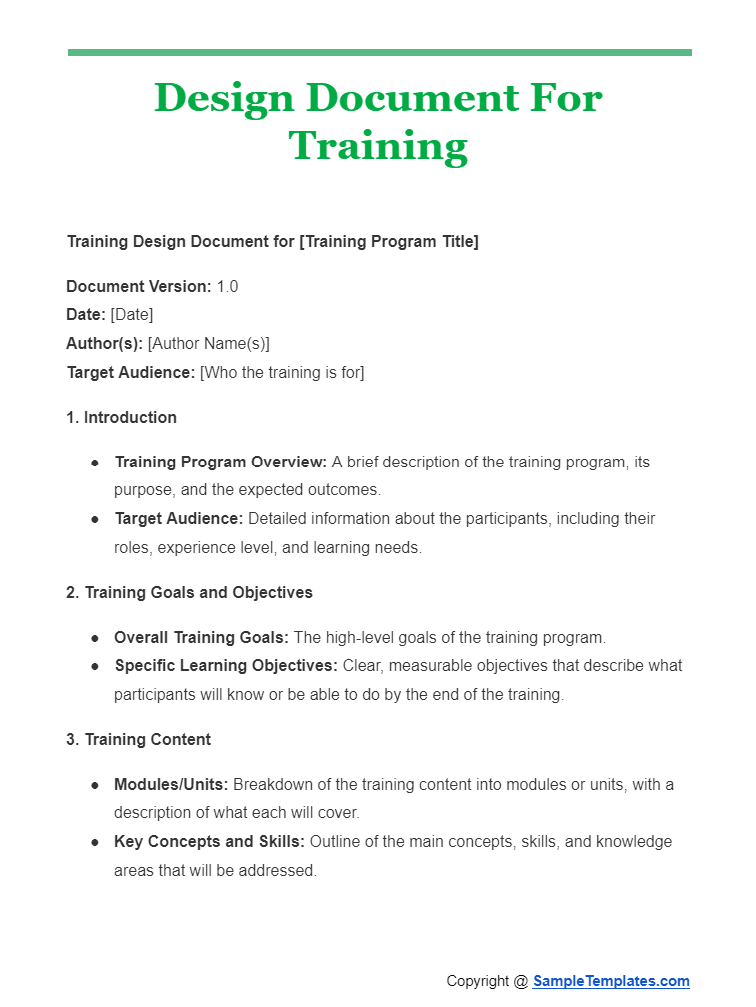
Browse More Templates On Design Document
System Design Document Template
Sample Software Design Document Template
What You Should Include in Your Design Document?
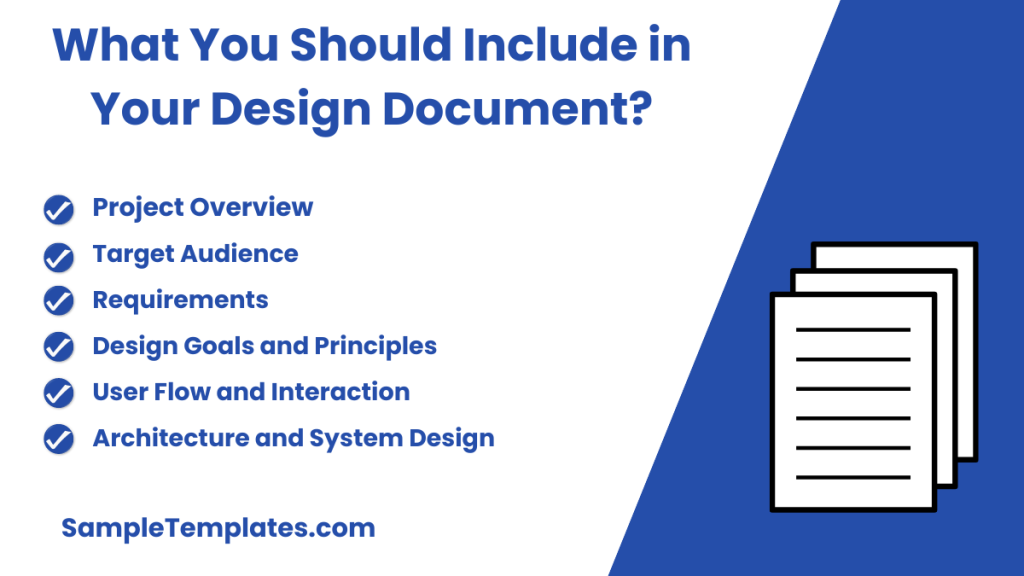
Including the right elements in your design document is essential for clarity, comprehensiveness, and successful project execution. Here are key components you should incorporate:
- Project Overview: A brief summary of the sample project, including its purpose, scope, and objectives. This sets the context for the entire document.
- Target Audience: Details about who the project or product is for. Understanding the audience is crucial for tailoring the design appropriately.
- Requirements: A detailed list of project or product requirements, including both functional and non-functional specifications.
- Design Goals and Principles: The high-level aims of the project and the design philosophies guiding your decisions, ensuring alignment with the project’s vision.
- User Flow and Interaction: Descriptions or diagrams that outline how users will interact with your product or system, highlighting key user journeys.
- Architecture and System Design: An overview of the system architecture, including major components and how they interact. This is more technical and is crucial for software and engineering projects.
- Wireframes or Sketches: Preliminary designs or sketches that give a visual idea of the product’s appearance and layout, especially important for UI/UX design.
- Technical Specifications: Detailed technical information necessary for development, including technology stacks, data models, APIs, and integration points.
- Security and Compliance: Information on how the design will adhere to relevant security protocols and compliance requirements, ensuring the product is safe and legal.
- Testing and Quality Assurance: An outline of the testing strategies, including types of tests to be conducted, testing environments, and quality assurance processes.
- Implementation Plan: A high-level plan showing how the design will be executed, including phases, milestones, and timelines.
- Budget and Resources: An overview of the sample budget, resources needed, and any constraints that might impact the design or implementation process.
- Risk Analysis: Identification of potential risks to the project with strategies for mitigation, ensuring that stakeholders are aware and prepared.
- Change Management: Procedures for how changes to the design will be managed throughout the project lifecycle, ensuring that the document remains a source of truth.
- Glossary: Definitions of technical terms and acronyms used within the document, making it accessible to all stakeholders.
- Appendices: Any additional information that supports the main content of the document but is too detailed or tangential to include in the main sections.
Including these elements will make your design document a valuable, comprehensive guide for your project, facilitating clear communication and efficient project management.
Design Specification Document Example
Technical Design Document Format
Sample Design Control Document in PDF
Printable Low Level Design Document Template
System Design Document Example
Different Types of Design Document
You can also check out these Requirements Document Samples as well as these Sample Tender Documents that can be useful as well as it can be helpful with regards to the subject matter.
Aside from that, you might also want to check out the different types of design documents together with its definition as well as its explanation so that you can be able to see and check if it would exactly suit the computer software that is attached to it or the computer software that you are using.
- Walk-through’s, Guides, “How to’s,” or Quick Start Guides – this particular part of the documentation plan is where you should be able to articulate and provide a step-by-step guide on how to operate the computer software that is being documented and how to accomplish something with it. Even the most computer illiterate would be able to follow the given instructions when done right, especially when they tend to be the most common audience when it comes to this type of design document, although everyone is included.
- Troubleshooting Documentation – this type of design document entails information on log files, information on the background processes to which the computer software is doing, file or data interaction and the like since the purpose statement of this type of design document is to clearly state the steps on how to diagnose the problems.
- Knowledge-based (Problem, Cause, Resolution) – this type of design document is probably one of the most defined scope of the documentation. It sample lists a certain problem, the particular cause of the problem, and the single solution to that specific problem, hence its is problem, cause, and resolution.
- Code, API, or SDK Documentation – this type of design document would simply indicate and identify how other people use your code and libraries so that they can be able to write add-ons, integration, plugins, and in most cases, modify the sample application through the code.
- Real Life Customer Implementations – this particular part of the design document is highlighting the success stories of the customers as well as how they were able to implement the software in their environment or on their lives.
- Marketing Documentation – this part of the design document lets everyone know about the existing computer software so that they may also use it.
Furthermore, you can also check out Business Requirements Documents that you may be find useful as well as relevant.
Standard Functional Design Document Template
Basic Game Design Document in Word
Tips for Creating Your Design Documents
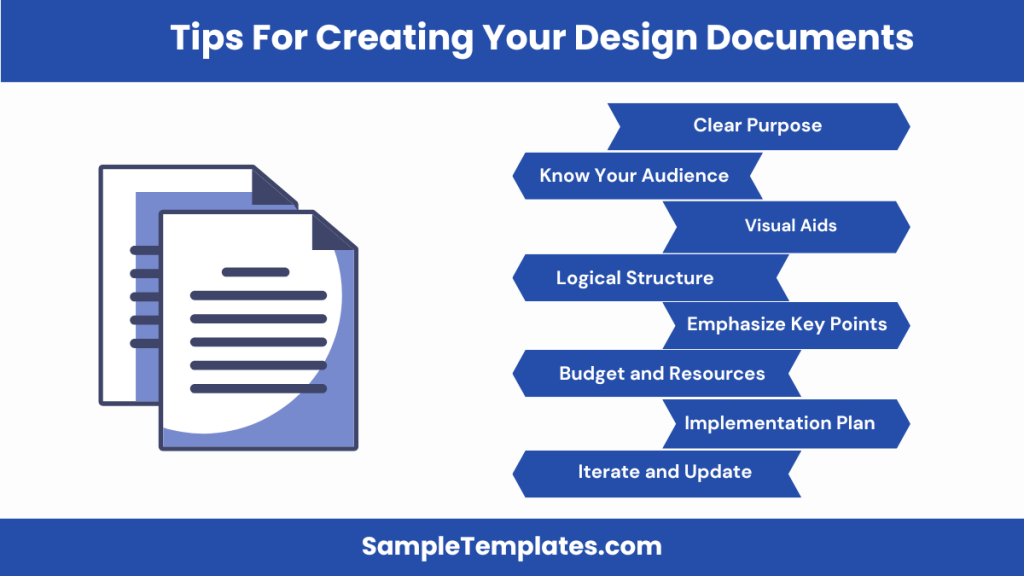
- Start with a Clear Purpose: Define the objective of your document. Is it to guide development, communicate design to stakeholders, or provide specifications for manufacturing? Your purpose will shape the document’s content and structure.
- Know Your Audience: Tailor the language, detail level, and presentation to the needs and expertise of your audience, whether they are engineers, designers, executives, or clients.
- Be Concise but Comprehensive: Include all necessary information but avoid unnecessary details that can overwhelm readers. Striking the right balance is key to maintaining clarity and usability.
- Use Visual Aids: Incorporate diagrams, flowcharts, wireframes, and other visual tools to complement text. Visuals can often convey complex information more effectively than words alone.
- Follow a Logical Structure: Organize your document in a clear, logical manner. A well-structured document might include sections like introduction, objectives, design details, technical specifications, and implementation plans.
- Emphasize Key Points: Highlight critical information, such as major design decisions or specific requirements, to ensure they are easily noticed by readers.
- Include Examples and References: Where relevant, include examples or reference similar projects. This can provide clarity and context, helping readers understand your decisions and approach.
- Iterate and Update: Design documents are living documents. Be prepared to update your document as the project evolves. Keeping the document current ensures it remains a reliable source of information for all parties involved.
Sample Solution Design Document Template
Project Design Document Template
How a design document should be?
A design document should be detailed, organized, and clear, providing comprehensive guidance on project goals, design decisions, functionalities, and technical specifications to ensure alignment across development teams.
What is in a design document?
A design document contains project objectives, user requirements, design choices, system architecture, component descriptions, interface details, and implementation strategies, serving as a roadmap for development.
What is a design specification document?
A design specification document outlines detailed requirements and standards for a project or product, including functionality, materials, dimensions, and performance criteria, guiding the creation process to meet predefined specifications.
What does a design statement include?
A design statement includes an overview of the project’s vision, design goals, conceptual approach, target audience, key features, and the intended user experience, articulating the project’s essence and direction.
What doesn’t go into a design document?
A software design document should include an overview of the project, system architecture, functional requirements, data structures, algorithms, user interface design, testing strategies, and version control procedures.
In conclusion, the design document serves as a blueprint for the development process, providing a clear roadmap for implementing the project. Its detailed specifications and sample plans guide the team towards successful execution and achievement of project goals.
Related Posts
Sample Business Card Templates
Sample Cashier Job Descriptions
Questionnaire Samples
FREE 10+ Sample HR Resource Templates in PDF
FREE 10+ HR Consulting Business Plan Samples in MS Word | Google Docs | Pages | PDF
FREE 49+ Sample Job Descriptions in PDF | MS Word
FREE 16+ Nonprofit Budget Samples in PDF | MS Word | Excel | Google Docs | Google Sheets | Numbers | Pages
FREE 13+ Academic Calendar Templates in Google Docs | MS Word | Pages | PDF
FREE 10+ How to Create an Executive Summary Samples in Google Docs | MS Word | Pages | PDF
FREE 23+ Sample Event Calendar Templates in PDF | MS Word | Google Docs | Apple Pages
Company Profile Samples
FREE 10+ Leadership Report Samples [ Development, Training, Camp ]
FREE 24+ Sample Payment Schedules in PDF | MS Word
FREE 10+ Return to Work Action Plan Samples in PDF | DOC
Autobiography Samples & Templates
